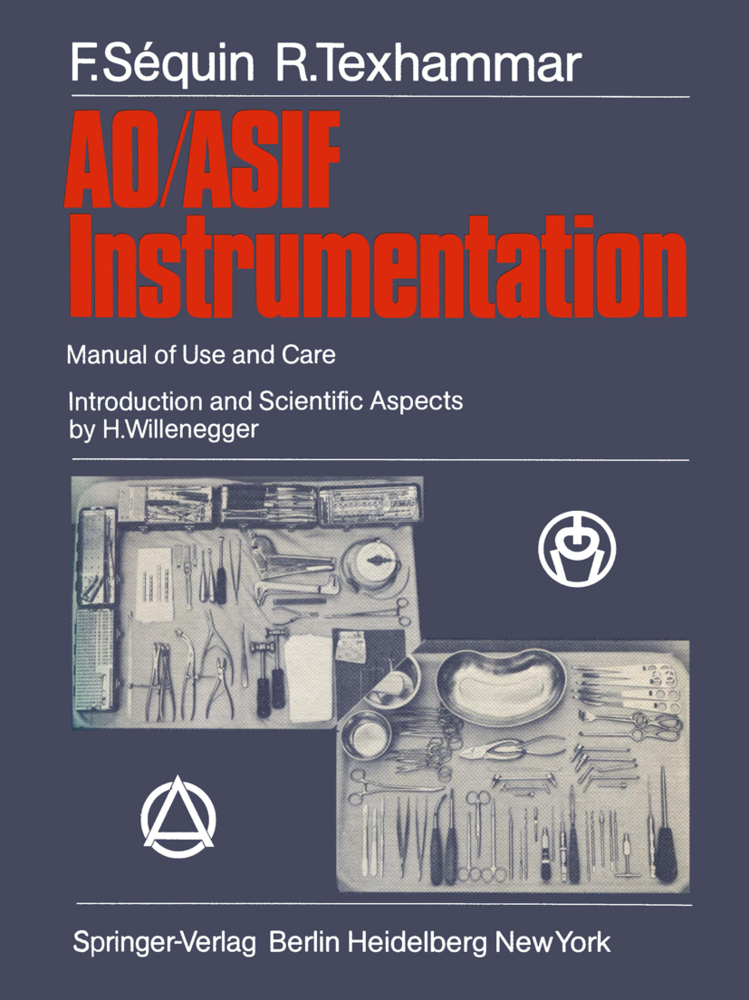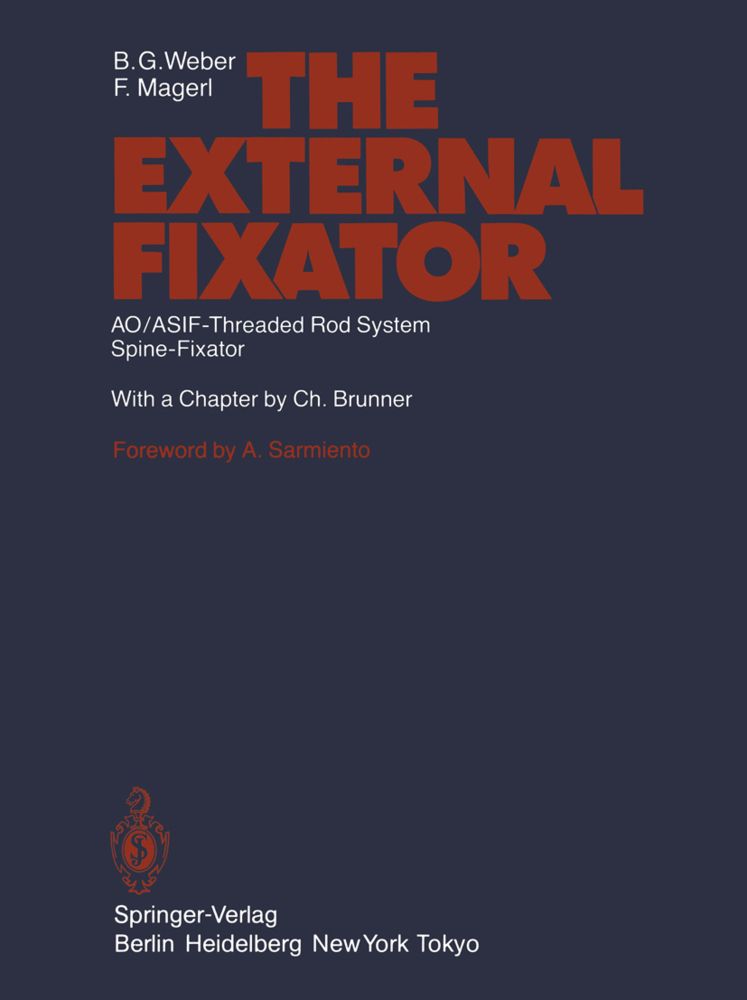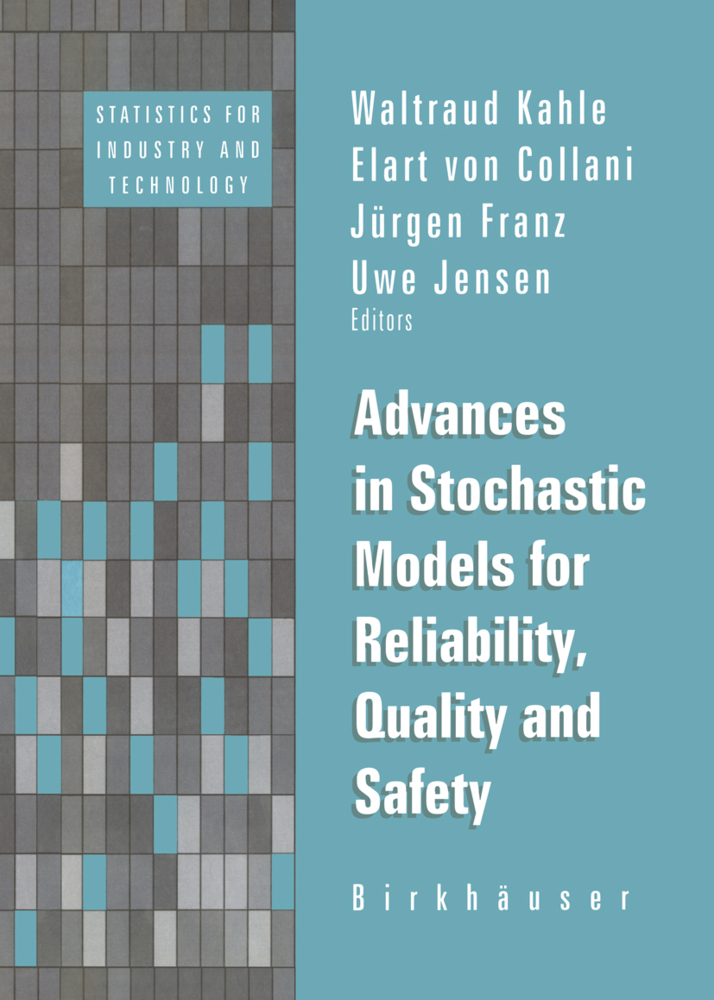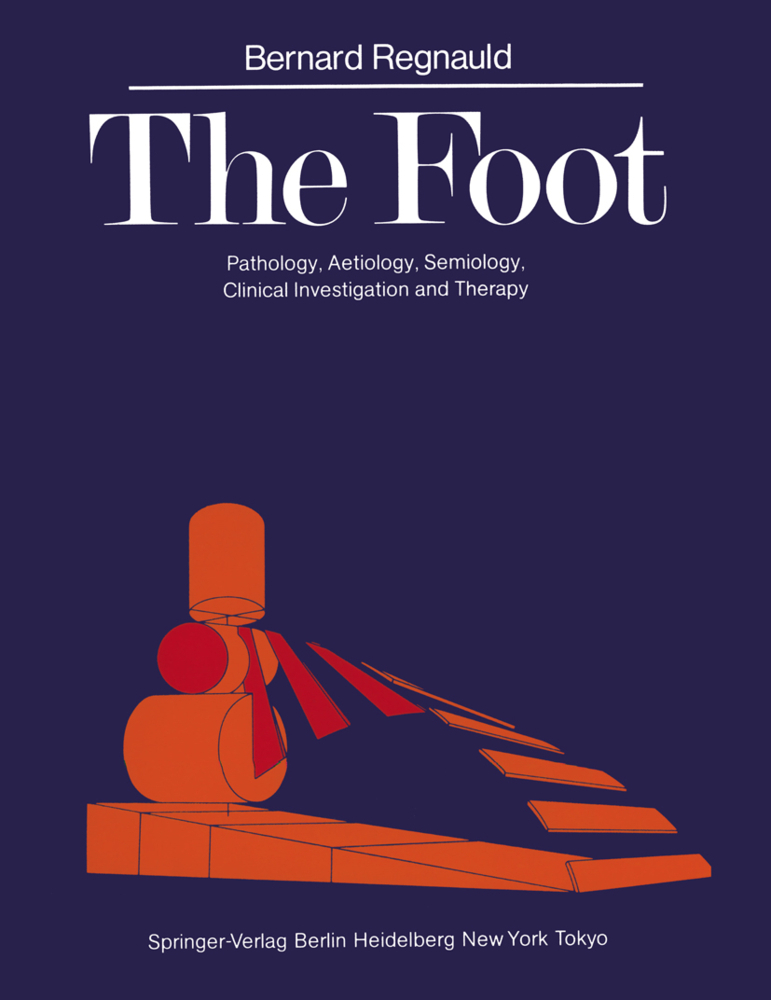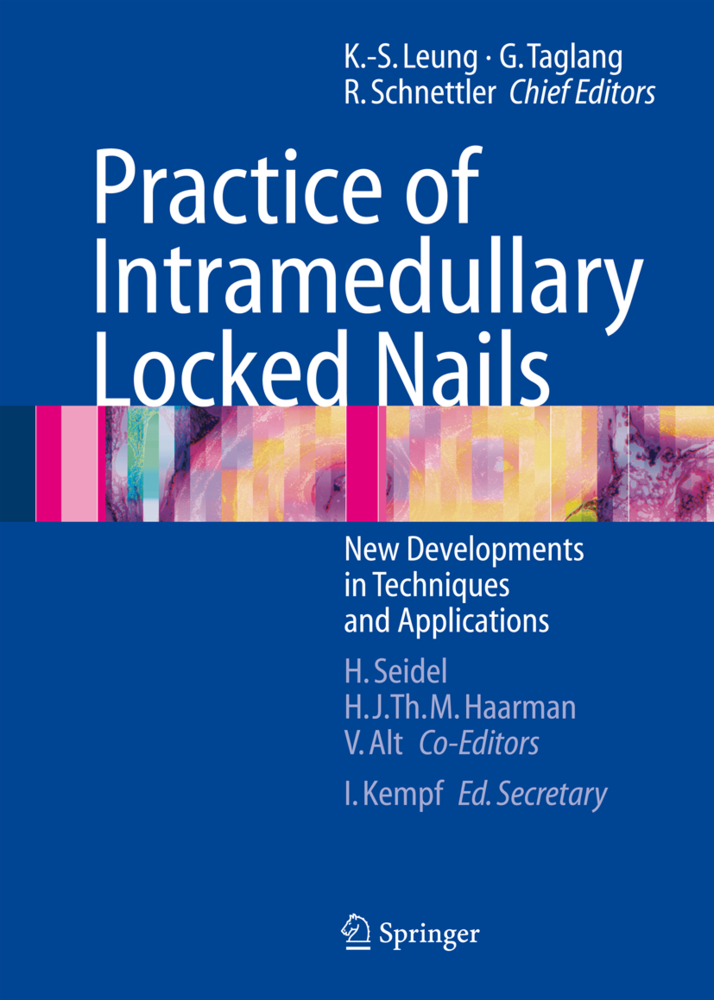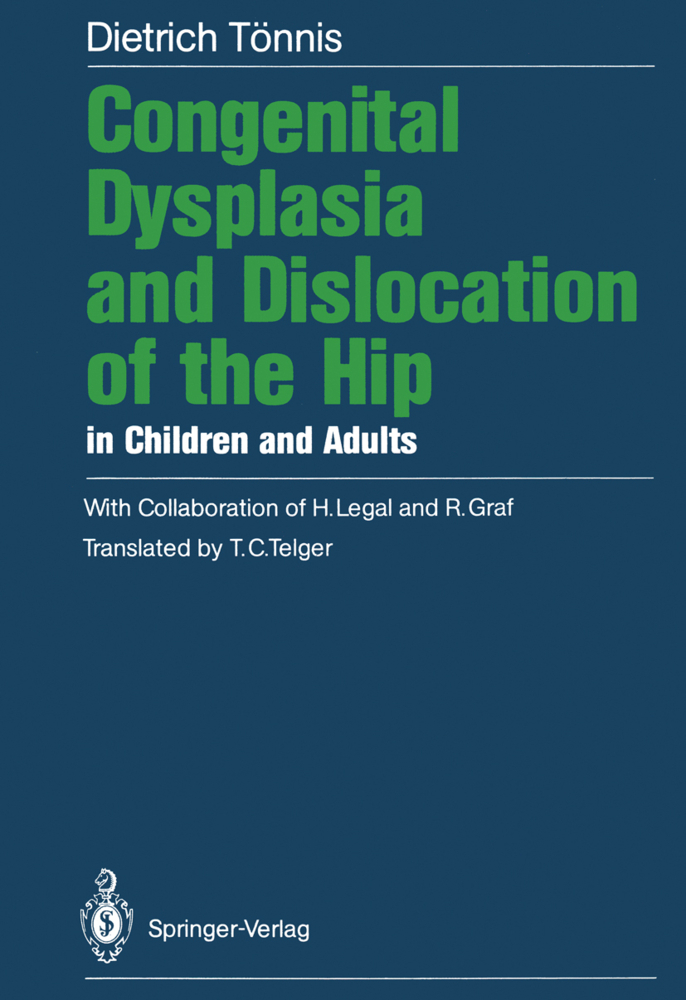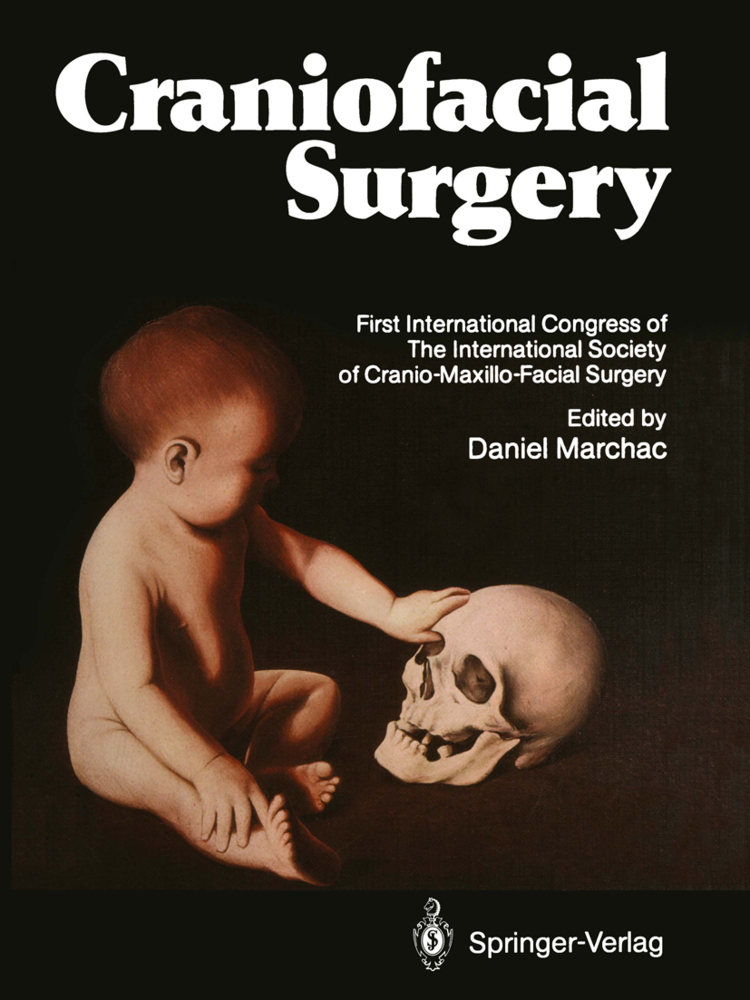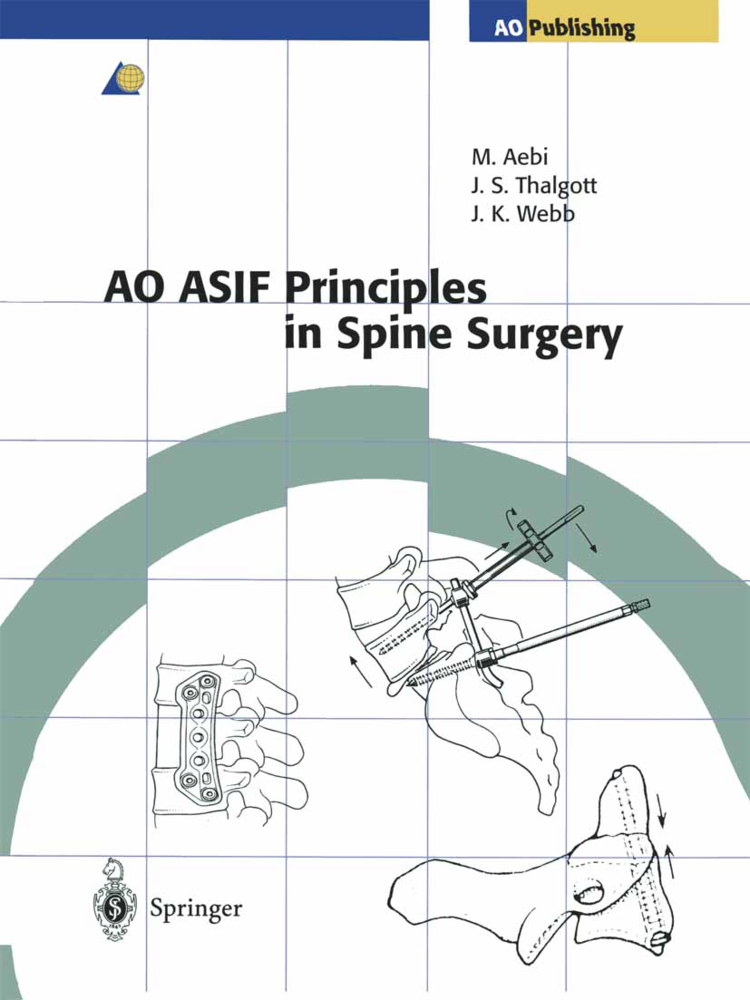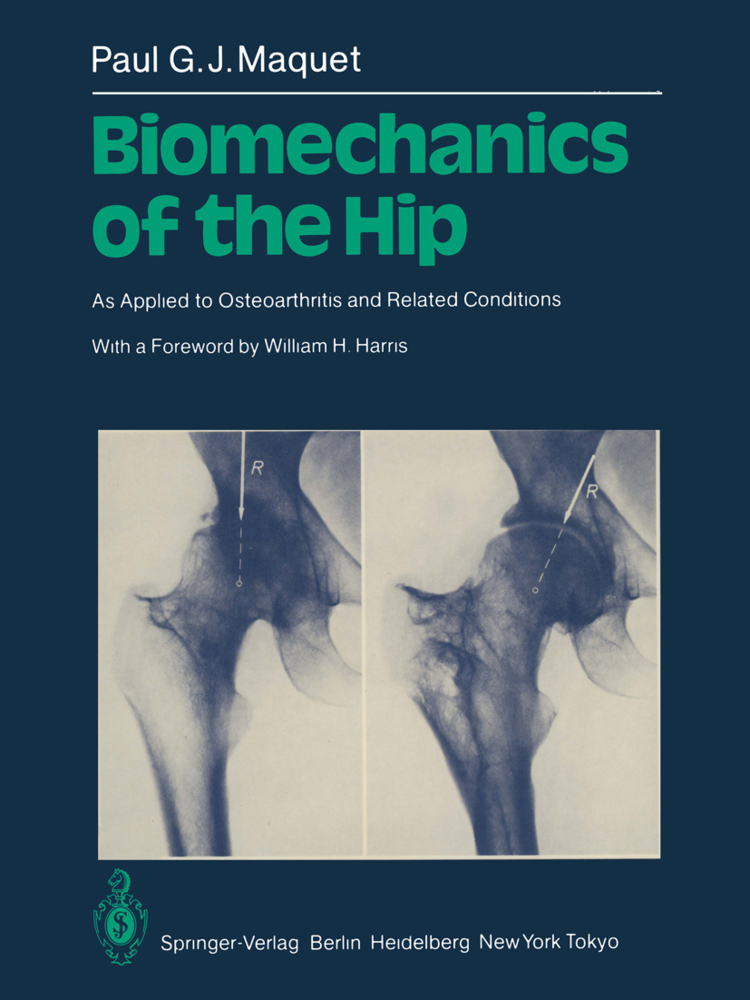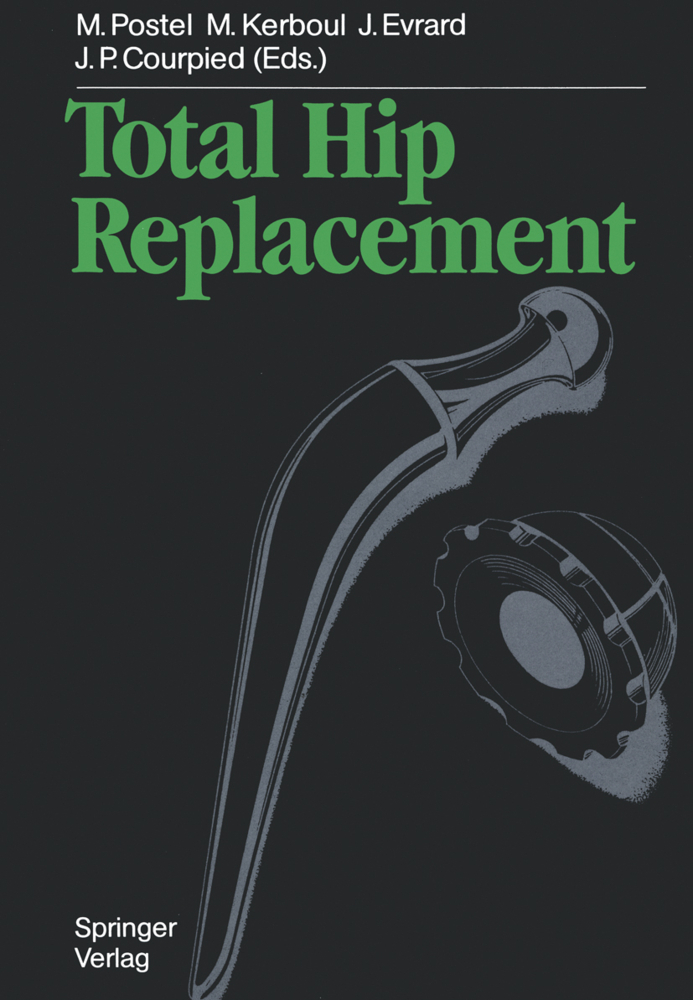AO/ASIF Instrumentation
Manual of Use and Care
AO/ASIF Instrumentation
Manual of Use and Care
During their 20 years of activity members of the Associa tion for the Study of Internal Fixation (AO - ASIF) have made authoritative contributions to the development of internal and external fixation. The close collaboration of surgeons, basic researchers, metallurgists, engineers and the establishment of clinical documentation has made it possible to achieve a solid scientific basis for internal fixa tion. Clear definitions for the standardization of different types of osteosynthesis were possible: interfragmentary compression, splintage and buttressing as well as combina tions of these three techniques. At the same time a scienti fic and workmanlike instrumentation was developed. The idea was to keep diversification within limits but, however, to assemble a comprehensive collection of implants and in struments to answer all the problems presented by the com plexity of bone operations. Osteosynthesis is a difficult and demanding operative method. Its. claims on the surgeon and the theatre staff are high. Therefore plans have existed for a long time to supplement the "Manual of Internal Fixation" with a de tailed description of the AO Instrumentation, its use and maintenance. Our collaborator FRIDOLIN SEQUIN, graduate engineer, has accomplished this task with expert knowledge. He has organized over many years courses for theatre nurses and has been able from the resulting experience to provide helpful suggestions. When RIGMOR TEXHAMMAR R. N. joined AO-International four years ago, it was natural to include her as a co-author.
2 Bone Heahng
3 Successful Internal Fixation
4 Failures Following Internal Fixation
5 Indications and Goals of Internal Fixation
6 Documentation
II Principles of the AO (ASIF)-Technique and Basic Mechanical Principles
The Principles of the AO (ASIF) Technique
1 Interfragmental Compression
2 Splinting
3 Combinations
III Practical Part
A Instrumentation of the AO/ASIF
1 Classification of AO Instruments
2 Materials Used in AO Instruments and Implants
3 Instruments for the Screw and Plate Fixation of Large Bones
4 Instrument Set for Angled Blade Plates
5 Small Fragment Set
6 Instrument Set for Removal of Broken Screws
7 Medullary Instrument Set
8 Wire Instrument Set
9 External Fixators
10 General Instruments of the AO
11 Special Instrument Sets
B Compressed Air and Compressed-Air Machines
1 Compressed Air as a Power Source
2 Air Supply
3 Compressed-Air Machines
4 Cleaning and Lubrication of the Machines
5 Sterilization
6 Hand Drill
C Cleaning, Care, and Sterilization of Instruments and Implants
1 General Guidelines During Surgery
2 Postoperative Cleanup of Instruments
3 Care and Cleaning of Implants
4 Packaging Items for Sterilization
5 Methods of Sterihzation
6 Storage of Sterile Items
7 Unpacking Sterile Items
8 Instrument Repair and Sharpening
9 Surgical Stockroom
D Preoperative, Operative, and Postoperative Guidelines
1 Preoperative Care of the Patient on the Ward
2 Preparation of the Patient in the Preparation Room
3 General Operative Guidelines
4 Guidehnes for Postoperative Positioning
5 Removal of Implants
6 Postoperative Complications
E Suggestions for the Management of Various Fractures
1 Fractures of the Scapula
2 Fractures of the Clavicle
3 Fractures of the Humerus
4 Fractures of the Forearm
5 Fractures of the Hand
6 Fractures of the Femur
7 Fractures of the Patella
8 Fractures of the Tibia
9 Fractures of the Foot
10 Fractures in Children
F Preparation of the Instruments
1 Fractures of the Proximal Humerus
2 Fractures of the Humeral Shaft
3 Fractures of the Distal Humerus
4 Fractures of the Shaft of the Radius and Ulna, Fractures of the Olecranon
5 Fractures of the Distal Forearm
6 Fractures of the Hand
7 Fractures of the Proximal Femur and Intertrochanteric Osteotomies
8 Fractures of the Femoral Shaft
9 Fractures of the Distal Femur
10 Fractures of the Patella
11 Fractures of the Head ofthe Tibia
12 Fractures of the Tibial Shaft
13 Fractures of the Distal Tibia
14 Malleolar Fractures
15 Fractures of the Foot
16 Medullary Nailing of the Femur
17 Medullary Nailing of the Tibia
18 Suggestion for Tray with Surgical Bone Instruments (A), Necessary for Surgery on Large Bones
19 Suggestion for Tray with Surgical Bone Instruments (B), Necessary for Surgery on Small Bones.
I Medical and Scientific Directives
1 The Origin and the Goals of the AO2 Bone Heahng
3 Successful Internal Fixation
4 Failures Following Internal Fixation
5 Indications and Goals of Internal Fixation
6 Documentation
II Principles of the AO (ASIF)-Technique and Basic Mechanical Principles
The Principles of the AO (ASIF) Technique
1 Interfragmental Compression
2 Splinting
3 Combinations
III Practical Part
A Instrumentation of the AO/ASIF
1 Classification of AO Instruments
2 Materials Used in AO Instruments and Implants
3 Instruments for the Screw and Plate Fixation of Large Bones
4 Instrument Set for Angled Blade Plates
5 Small Fragment Set
6 Instrument Set for Removal of Broken Screws
7 Medullary Instrument Set
8 Wire Instrument Set
9 External Fixators
10 General Instruments of the AO
11 Special Instrument Sets
B Compressed Air and Compressed-Air Machines
1 Compressed Air as a Power Source
2 Air Supply
3 Compressed-Air Machines
4 Cleaning and Lubrication of the Machines
5 Sterilization
6 Hand Drill
C Cleaning, Care, and Sterilization of Instruments and Implants
1 General Guidelines During Surgery
2 Postoperative Cleanup of Instruments
3 Care and Cleaning of Implants
4 Packaging Items for Sterilization
5 Methods of Sterihzation
6 Storage of Sterile Items
7 Unpacking Sterile Items
8 Instrument Repair and Sharpening
9 Surgical Stockroom
D Preoperative, Operative, and Postoperative Guidelines
1 Preoperative Care of the Patient on the Ward
2 Preparation of the Patient in the Preparation Room
3 General Operative Guidelines
4 Guidehnes for Postoperative Positioning
5 Removal of Implants
6 Postoperative Complications
E Suggestions for the Management of Various Fractures
1 Fractures of the Scapula
2 Fractures of the Clavicle
3 Fractures of the Humerus
4 Fractures of the Forearm
5 Fractures of the Hand
6 Fractures of the Femur
7 Fractures of the Patella
8 Fractures of the Tibia
9 Fractures of the Foot
10 Fractures in Children
F Preparation of the Instruments
1 Fractures of the Proximal Humerus
2 Fractures of the Humeral Shaft
3 Fractures of the Distal Humerus
4 Fractures of the Shaft of the Radius and Ulna, Fractures of the Olecranon
5 Fractures of the Distal Forearm
6 Fractures of the Hand
7 Fractures of the Proximal Femur and Intertrochanteric Osteotomies
8 Fractures of the Femoral Shaft
9 Fractures of the Distal Femur
10 Fractures of the Patella
11 Fractures of the Head ofthe Tibia
12 Fractures of the Tibial Shaft
13 Fractures of the Distal Tibia
14 Malleolar Fractures
15 Fractures of the Foot
16 Medullary Nailing of the Femur
17 Medullary Nailing of the Tibia
18 Suggestion for Tray with Surgical Bone Instruments (A), Necessary for Surgery on Large Bones
19 Suggestion for Tray with Surgical Bone Instruments (B), Necessary for Surgery on Small Bones.
Sequin, F.
Texhammar, R.
Willenegger, H.
Telger, T.
| ISBN | 9783642965944 |
|---|---|
| Artikelnummer | 9783642965944 |
| Medientyp | Buch |
| Auflage | Softcover reprint of the original 1st ed. 1981 |
| Copyrightjahr | 2012 |
| Verlag | Springer, Berlin |
| Umfang | 308 Seiten |
| Abbildungen | XVI, 308 p. |
| Sprache | Englisch |

